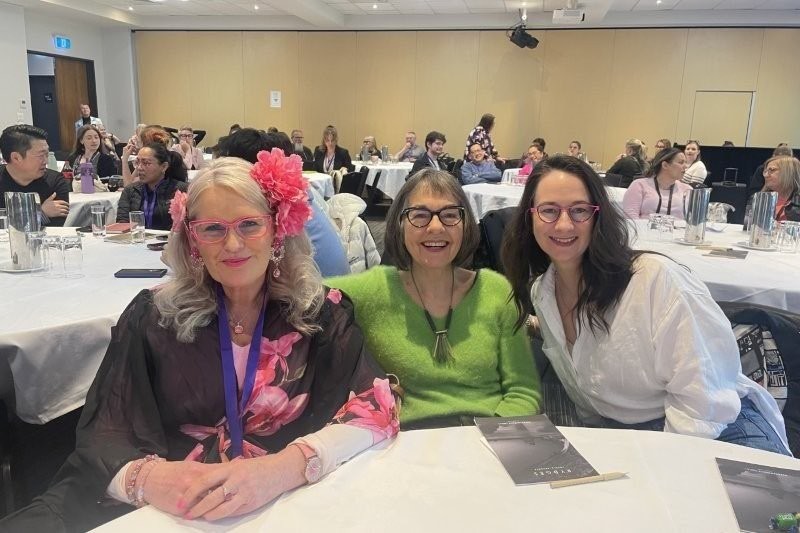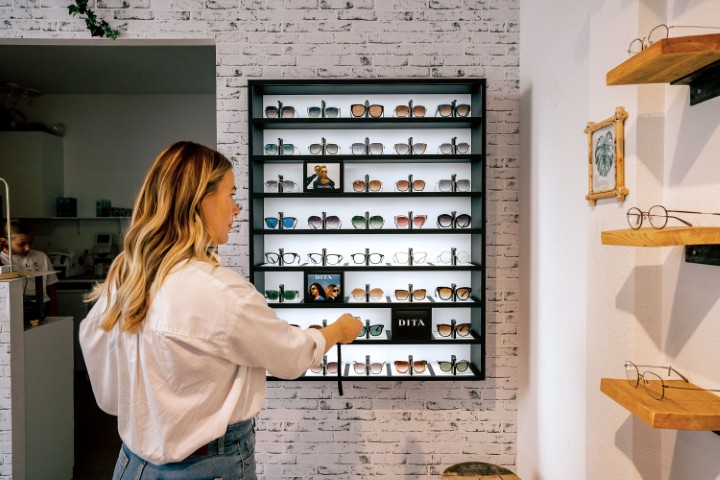The DO’s role in the remake puzzle
Time, money and reduced productivity – this is what a spectacle remake costs a store, optical laboratories and customer. With the precision required – and intricate balance of priorities needed for a pair of specs to perform to their full potential – it has long been accepted that remakes are unavoidable. However, dispensing opticians (DOs) play a vital role in reducing remake rates. The DO’s skill set cannot be overstated in the success of spectacle functionality. By looking deeper at the importance of the DO’s role in the dispensing process we can find numerous solutions to reduce remake rates.
Nicole Hibbert, Shamir Academy training manager, explains poor frame selection is one factor leading to less than perfect vision and a lack of comfort for the customer, increasing remake rates. Unnecessary thickness, weight, aberrations and field-of-view restrictions can all be reduced through expert frame selection, she says. “It’s useful for DOs to be aware of limitations and best practice when ordering. For instance, mid to high minus Rx ordered in a curved frame, or a similar Rx ordered with a high height in a large frame will result in thick lenses. These kinds of issues result in remakes.”
Frame selection is a balance of fashion, feel, financials and function.
- Fashion – appropriate frames will meet the customer’s aesthetic preferences
- Feel – they will feel comfortable. DOs can ensure they are the appropriate dimensions for the customer’s anatomy and complement this with expert frame adjustments
- Financials – with the increasing cost of living, customers may be investing in a longer-term frame – a statement worn for many years, unlike clothing that can be changed more readily. Careful and considered frame selection will improve a successful full-cycle dispense – one that leads to future dispenses rather than a remake
- Function – the frames will allow the lenses to perform as intended, while reducing potential problems. Appropriate frame depth must be allowed for the required lens design
As an aesthetic representation of their identity, frames require unique levels of assistance for each customer. Some will require multiple visits of extended length and opinions from various DOs, family and friends. Others will decline assistance and select independently within minutes. High-level interpersonal skills will allow a DO to read the customer and adapt their approach accordingly. A skilled DO able to find a frame that satisfies the customer’s requirements will instil confidence in the selection while reducing the potential for remakes.
Questions vs assumptions
Open and closed questions will aid a good dispense. Lifestyle questions will make sure outcomes exceed the customer’s expectations and prevent remakes due to issues where the spectacles are not fit for purpose.
There isn’t a checklist of which lifestyle questions to ask every customer; questions flow naturally from one from the other, specific to the customer’s needs. A good starting point is looking deeper at the intended purpose of the spectacles. If they are for reading, what is the reading material and how far away will it be? The leadership team at Specsavers Erina Fair, Australia, identified this as an area for improvement, according to retail manager and Australasian College of Optical Dispensing (ACOD) trainer and assessor Rayleen Tamblyn. “We required all optometrists to include intermediate adds in the prescription, to determine working distance and correct Rx for visual display unit usage. This significantly reduced the number of specs being made as readers (which should have been made as single-vision intermediate).”
If the patient is looking for distance lenses, what activities will they be wearing them for? Would they benefit from lens treatments tailored for that specific task? If, like many customers, they are needing specs for multiple tasks and distances, have you offered the most suitable design rather than your go-to lens?
Knowing the product and the nuances of each progressive design is key to reducing remakes, says Hibbert. This is echoed by Glenn Bolton, Shamir New Zealand managing director, who says he has seen a need for greater understanding in occupational designs.
Ethical dispensing practice is a common theme discussed by ACOD students in their assessment pieces. It is ethical to sell customers what they require, so it is important for DOs to keep in mind that our duty of care is to recommend the best optical product for them. This means that upsells for higher-bracket lenses, lens treatments and, in some instances, additional pairs are ethical recommendations. When tailored to a customer’s specific needs, such recommendations will reduce the need to remake.
Tim Thurn, Essilor Luxottica’s medical and professional relations director ANZ, says customers not only want your advice, they need it! “Fortunately, you have a broad range of products, services and clinical skills to meet those needs… however, personalisation begins with an in-depth understanding of the patient.”1
DO fundamentals for final fit
Final fitting is a vital skill for DOs. Done well, it sets the spectacles up for success. Done poorly, it sets them up for failure. When the topic is taught in ACOD classes, there are students who flag that it’s not common practice to do so within their store prior to taking dispensing measurements. A range of reasons is given, the primary one being lack of time. Consider the full picture of the dispensing lifecycle: selection, dispense, collection and either return business or troubleshoot and potential remake. It’s not hard to make the point that more time invested in the initial stages not only saves time in troubleshooting later, but also money in potential remakes, customer satisfaction and trust in your practice.
Investigating time management and patient expectations, Thurn says, “When asked ‘How long does an eye test take?’, the common answer is ‘about 30 minutes’. However, it is not unusual for a patient to spend upwards of an hour or more in your practice”.2 Here, the age-old saying rings true: under-promise and over-deliver. If we quote a longer timeframe as our norm, we set realistic expectations for the customer so they won’t be rushed, nor will the DO feel pressure to take shortcuts with adjustments and measurements.
“Consider the optical ramifications of our adjustments, particularly in areas of pantoscopic angle and vertex distance,” say Wilson and Daras in Practical Optical Dispensing 3. Inappropriate amounts of pantoscopic angle will create undue amounts of oblique astigmatism, negatively impacting the performance of the lens. DOs play a vital role in minimising this aberration by ensuring appropriate ranges of pantoscopic angle are applied. For higher prescriptions, changes in the vertex distance compared to the test vertex will significantly change the effective prescription experienced by the customer. Care in adjustments and potential prescription compensation should also be taken into account here.


Inappropriate amounts of pantoscopic angle will negatively impact the performance of the lens. Left shows an inappropriate amount (0) while right shows an appropriate amount (12). Credit: April Petrusma
Considering we are ordering precise measurements in increments of fractions of a millimetre, the importance of conducting a high level, appropriate final fit cannot be overstated. While not responsible for the refraction and the intended prescription, DOs are the gatekeepers of the effective prescription. Precision measurements and careful frame adjustment will ensure the prescription can function as intended.
Measurements for success
Dispensing tools have come a long way from the humble pupillary distance (PD) rule. Advancements in manual tools have improved ease, accuracy and professionalism, while digital measuring systems offer precision measurements. But they are tools nonetheless and their precision and accuracy depend on the DO using them.
There is a clear and pressing need to capture accurate measurements and provide these details on orders. The Shamir New Zealand laboratory provided data showing approximately 80% of orders provide monocular PDs. This means the accuracy of 20% of orders could be improved – there is definitely potential in remake reduction by conducting and including this fundamental measurement. As Bolton explains,“If a lens design can be compensated with the binocular vision dysfunction, panto and wrap, then the measurements need to be provided. Close to 50% provide the full measurements.” Given the high price tag of lenses requiring these measurements, there is a massive opportunity to reduce potential remakes and costs by taking them accurately and including when required.
Conclusion
ACOD director and teacher James Gibbins describes DOs as, “Frames, lenses and completed spectacles experts”. For these areas, we have the ability to alleviate and reduce spectacle remakes. Not only will expert frame and lens recommendations, adjustments and measurements see a reduction in remakes, but an increase in customer satisfaction, store profitability and store-to-laboratory productivity.
References
1. Thurn T. The Power of Personalisation, MiVision, 30 September 20182. Thurn T. Practice Possibilities: Don’t Miss the Future, MiVision, 31 August 20183. Wilson D and Daras S. Practical Optical Dispensing (3rd Ed). The Open Training and Education Network, 2014.

Virgilia Readett, in optics since 2012, is an ACOD teacher. She holds a Certificate IV in Optical Dispensing, Certificate IV in Training & Assessing and a Bachelor of Arts, majoring in communications.
























